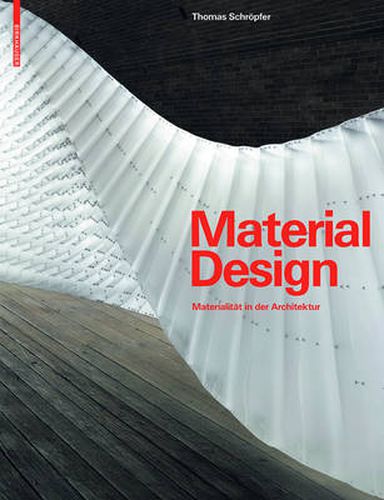Readings Newsletter
Become a Readings Member to make your shopping experience even easier.
Sign in or sign up for free!
You’re not far away from qualifying for FREE standard shipping within Australia
You’ve qualified for FREE standard shipping within Australia
The cart is loading…






The approach of Informing Architecture by Materiality opens the way to an innovative use of materials in the design professions. Taking material qualities and properties such as texture, elasticity, transparency and fluidity as a point of departure, the concept described and employed here transcends the conventional definitions of building materials. Instead, the focus is on a multitude of material operations, like folding and bending, carving and cutting, weaving and knitting, mirroring and screening.
The featured design strategies and methods address established and new materials alike. They are applied both to the scale of the detail and the entire building. The examples comprise prototype structures as well as large building projects.
Eight chapters deal with surfaces and layers, joints and juctions, weaving and texturing, nanoscale transformations, responsiveness, the integration of ephemeral factors like wind and light as well as material collections providing professional resources. Written by renowned experts in this field, the book features many examples from international contemporary architecture.
The introductory part provides the conceptual background, while a final chapter describes consequences for pressing issues of today, like sustainability or life cycle assessment.
$9.00 standard shipping within Australia
FREE standard shipping within Australia for orders over $100.00
Express & International shipping calculated at checkout
The approach of Informing Architecture by Materiality opens the way to an innovative use of materials in the design professions. Taking material qualities and properties such as texture, elasticity, transparency and fluidity as a point of departure, the concept described and employed here transcends the conventional definitions of building materials. Instead, the focus is on a multitude of material operations, like folding and bending, carving and cutting, weaving and knitting, mirroring and screening.
The featured design strategies and methods address established and new materials alike. They are applied both to the scale of the detail and the entire building. The examples comprise prototype structures as well as large building projects.
Eight chapters deal with surfaces and layers, joints and juctions, weaving and texturing, nanoscale transformations, responsiveness, the integration of ephemeral factors like wind and light as well as material collections providing professional resources. Written by renowned experts in this field, the book features many examples from international contemporary architecture.
The introductory part provides the conceptual background, while a final chapter describes consequences for pressing issues of today, like sustainability or life cycle assessment.